

New material design for transistors could downsize next-gen tech
By better taming the Jekyll-and-Hyde nature of an alternative to the semiconductor — one that transitions from electricity-resisting insulator to current-conducting metal — Nebraska’s Xia Hong and colleagues may have unlocked a new path to smaller, more efficient digital devices. The team reported its findings in the journal Nature Communications. (2/14/24)

EQUATE-funded paper makes cover of Advanced Physics Research
Energy-efficient, fast, and non-volatile memory is the apogee of antiferromagnetic spintronics. The cover page shows a device that utilizes an antiferromagnetic, B-doped thin film of magnetoelectric Cr2O3. Voltage applied across the film controls its Néel vector and state variable. To facilitate high-temperature operation, the Néel temperature, TN, of B:Cr2O3 is tuned. In the article by Ather Mahmood, Christian Binek, and colleagues, cold neutron and x-ray photoemission (XPS) data show that annealing leads to interfacial B-accumulation and TN increase. Neutron and XPS depth profiling map the depth-dependent B-concentration. (From Advanced Physics Research) (1/30/24)

Engineering researchers develop new understanding of plant cells
A new technique employed in the Nano-Engineering Research Core Facility (NERCF) has allowed researchers to understand better how plant cells respond to environmental changes to control the flow of gases and water vapor. In a paper published in the National Academy of Science’s journal PNAS Nexus, Nebraska’s Joseph Turner, Robert W. Brightfelt Professor of Mechanical and Materials Engineering, and colleagues were able to quantify the anisotropic mechanical properties and interior cell pressure of a cell using a novel approach. When inserting the tip of a nanoindenter into the guard cells of a weed known as thale cress, researchers were able to move it vertically and laterally. Turner said this allowed for taking measurements in all directions, which proved a major breakthrough in the research and set a foundation for comparing plants. “The most exciting part of this research is that for the first time, we were able to capture the stomatic process in-plane. That was something no one had measured before,” Turner said. (11/13/23)
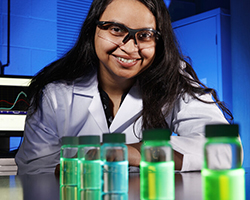
Dishari seeking greener energy by researching plant polymers
Shudipto Dishari, the Ross McCollum associate professor of chemical and biomolecular engineering, has recently begun work on research utilizing plant-based materials that could revolutionize the way electrochemical devices transport charge-bearing ions and produce electricity. “This project will uniquely valorize the remnants of corn harvest and Christmas trees and provide source material for a new polymer, which will be eco-friendly, cheap, and efficient,” Dishari said, “Through this work, we are also bringing a new concept in energy research — green energy by using green materials.” (11/3/23)

Morin, Yang team craft adjustable arrays of microscopic lenses
With the aid of engineers Ruiguo Yang and Grayson Minnick, Stephen Morin’s team can now arrange and affix tiny gelatinous lenses to an elastic material. By carving the equivalent of aqueducts into the material and then running temperature-altering or water-gathering fluids through those channels, the researchers can also expand or contract the lenses in mere seconds — modifying their magnification, focal length, and other optical properties. Whereas insects and crustaceans evolved their multifaceted eyes to draw in panoramas of ancient environments, Morin’s team is envisioning the future: projecting signals onto sensors embedded in soft robotic skins, for instance, via on-demand control. (11/2/23)

EQUATE-funded paper selected for PRB Editors' Suggestion
A paper published in Physical Review B by Christian Binek and colleagues Syed Q.A. Shah, Ather Mahmood, and Arun Parthasarathy was selected as an Editors' Suggested article in August 2023. The paper, "Search for magnetoelectric monopole response in Cr2O3 powder," was funded in part by the NSF/EPSCoR RII Track-1: Emergent Quantum Materials and Technologies, OIA-2044049. (9/28/23)
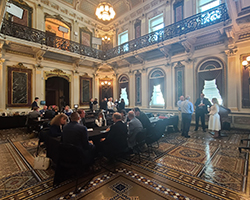

Binek represents Nebraska at first Nanotechnology Infrastructure Leaders Summit
Christian Binek was in attendance at a first-of-its-kind gathering of infrastructure center leaders from across the country. The Nanotechnology Infrastructure Leaders Summit, held at the Eisenhower Executive Office Building in Washington, D.C., was an important first step toward creating a more cohesive network of U.S. shared infrastructure facilities, optimizing the efficiency and impact of attending organizations, and creating a more seamless network for the country's researchers, students, and entrepreneurs. (9/27/23)

Dishari investigating lignin for use in new antimicrobials
Shudipto Dishari’s research is investigating how lignin, a naturally abundant polymer and a major element of plant cell walls, could be processed to make new antimicrobials. Her team’s findings, outlined in the American Chemical Society’s Sustainable Chemistry and Engineering journal, are promising, and the work is now featured by the journal as a supplemental cover story. In this work, Dishari’s team modified lignin from Norway spruce trees with quaternary ammonium, a positively charged functional group used to kill bacteria, viruses and mold. The modification was done in water which ensured green synthesis. The team then tested this lignin-derived antimicrobial, named QAL, on an antibiotic-resistant strain of E. coli causing urinary tract infections. The positively charged groups of QAL made it easy for the lignin to attack and disrupt the outer skin of bacteria, which is net negatively charged. “While antibiotic-resistant bacteria are smart enough to save themselves from the action of conventional drugs, they cannot protect themselves from the non-specific effects that QAL makes,” Dishari said. (9/14/23)

EQUATE-funded paper published on back cover of Advanced Optical Materials
Abdelghani Laraoui and colleagues showed that when single photon emitters in thin hexagonal boron nitride flakes are brought in contact with silver nanocubes, their quantum properties are enhanced due to plasmonic effects, manifested by a decrease in their excited state lifetime, a narrowing of their spectra, and an increase of their fluorescence. The paper titled "Plasmon Enhanced Quantum Properties of Single Photon Emitters with Hybrid Hexagonal Boron Nitride Silver Nanocube Systems" was selected for the back cover of Advanced Optical Materials 11(16). (9/13/23)

EQUATE teams develop process to better see into nanoscale
Two EQUATE-supported, multidisciplinary teams with many of the same researchers are developing processes that allow scientists to better see into the nanoscale and harness possibilities of the quantum realm. The two projects each had papers published in prestigious research journals in the same week of May.
Researchers on the first team detail their novel technique using nitrogen vacancy-based magnetometry to study the magnetic properties of individual iron-triazole spin crossover nanorods and nanoparticle clusters; their paper was published in the May 9 edition of ACS Nano.
Researchers on the second team used an emerging, ultra-thin host material to increase the brightness of single-photon emitters by 200%; their paper was published in the May 3 edition of Advanced Optical Materials.
(7/20/23)

Team IDs emergence of surprising layers in nanomaterial
Lucía Fernández-Ballester and her team have observed never-before-seen intricacies of the crystallization of a polymer known as P3HT. By melting P3HT and watching it cool through the lenses of light and X-rays, the team discovered hidden depths that can solidify and crystallize in different ways, which can alter the transport of electric charges. The team reported its findings in the journal Macromolecules, which featured the study on the cover of its most recent issue. (5/1/23)

Dishari team developing polymers to boost hydrogen cell efficiency
Shudipto Dishari, chemical and biomolecular engineering, is leading a research team that is designing polymers to find a solution to ion transport limitations in hydrogen fuel cells by making charge-bearing ions run faster across the cells. They aim to develop new, biological ion channel-inspired ionomers to boost the movement of those charges and improve the performance of clean energy technologies to meet the cost-performance-durability targets set by the Department of Energy. (3/8/23)

NRIC 2023: Topology & Valley-Driven Quantum Phenomena
The 2023 Nebraska Research and Innovation Conference (NRIC) -- Topology and Valley-Driven Quantum Phenomena -- will take place Friday, March 17, at the Embassy Suites Hotel in downtown Lincoln. This all-day meeting includes invited speakers and poster sessions with EQUATE student and post-doctoral researchers. The cost to attend this event is free, however pre-registration is required. (1/11/23)

Scilight: Iron nanoparticles boost magnetocaloric effect
A paper authored by Chrisitan Binek, Jeff Shield, and colleagues from North Carolina A&T (NCAT) was recently published in the Journal of Applied Physics. The article "Large refrigerant capacity in superparamagnetic iron nanoparticles embedded in a thin film matrix" was also chosen by AIP's editors to be featured in a "Scilight" - a science highlight showcasing the most interesting research published in AIP Publishing Journals. NCAT was also recently awarded a $10 million grant from the Department of Energy to establish a center focused on clean energy initiatives led by paper co-author Dhananjay Kumar. (11/23/22)

Teamwork by Hong and Schubert leads investigation of remote surface optical phonon scattering in ferroelectric oxide-gated graphene
The October 2022 edition of the Journal of Applied Physics features research from a collaboration led by Xia Hong and Mathias Schubert. Their study reveals the room temperature mobility limit in graphene imposed by the ferroelectric oxide gate, providing important material information for designing high-performance ferroelectric/graphene transistors for high frequency, low power nanoelectronic applications. Learn more at https://aip.scitation.org/doi/full/10.1063/5.0106939. (11/10/22)

Li team tracks tiny particle movement through pipes
Yusong Li, and colleague Jae Sung Park, are working on a three-year, $418,120 National Science Foundation grant to learn how small particles – some less than 10 microns – better move through confined fluid flows in transport systems, such as pipes. The study looks to determine better ways for energy and environmental sectors to achieve greater efficiency at mitigating contamination or providing cheaper fuel. (8/24/22)

NSF Funds NV Quantum Sensing Capabilities for NCMN Attocube System
Acquisition of optical access in a
cryogenic scanning probe microscope for quantum sensing capabilities."
This instrument will leverage the existing scanning probe microscopy
capabilities we have at NCMN and add the first commercial quantum sensing
device to the set of characterization facilities at NCMN. There are only a
few instruments of this kind available throughout the country. Christian Binek is the PI, and
Xia Hong, Abdelghani Laraoui, and
Xiaoshan Xu are Co-PI's.
We can’t wait to set the system up and see it producing scientific
results. (8/18/22)

Team achieves ‘significant breakthrough’ in data-encoding material
Bucking years of conventional wisdom, Husker researchers have shown that hafniumm oxide's most technologically appealing property can emerge from unexpected conditions. In a new Nature Materials study, a team led by Nebraska’s Xiaoshan Xu, Evgeny Tsymbal and Alexei Gruverman has demonstrated that growing a higher-quality, larger-grained crystal of hafnium oxide can actually generate higher polarization and potentially more reliable ferroelectricity. The quality of the crystal, meanwhile, is offering sharper insights into how and why that ferroelectricity occurs. (7/11/22)

Kidambi co-authors new paper on cyberbiosecurity
Srivatsan Kidambi is among the co-authors of a newly published paper that examines the emerging and expanding interdisciplinary field of cyberbiosecurity. The paper explores the concept of "biohacking,” in which an attack is conducted both from the cyber and biological domains. The paper also examines the use of deep learning technologies to safeguard DNA sequencing against such attacks. (7/8/22)
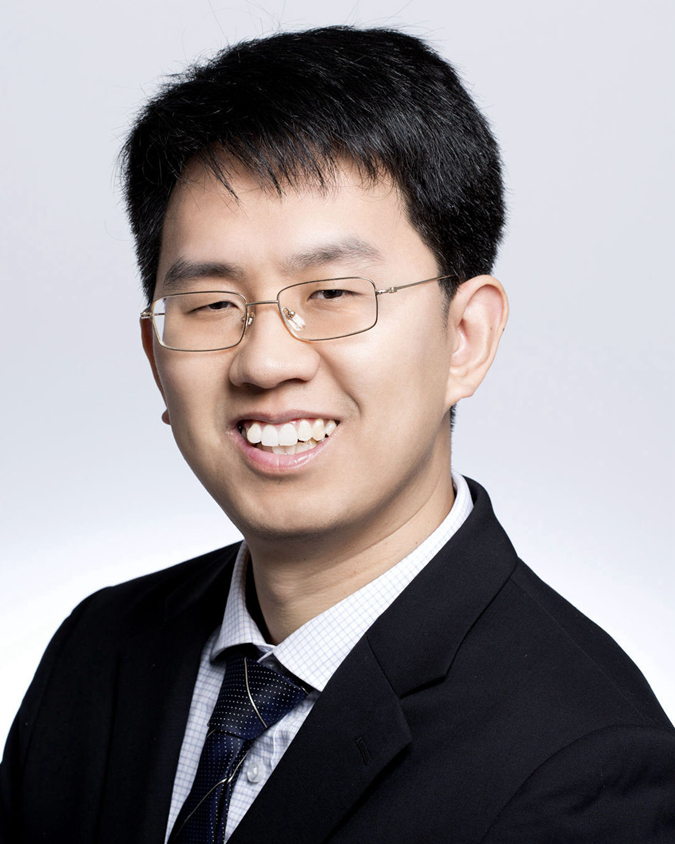
New device gets scientists closer to quantum materials breakthrough
Researchers from the University of Nebraska-Lincoln and the University of California, Berkeley, have developed a new photonic device that could get scientists closer to the “holy grail” of finding the global minimum of mathematical formulations at room temperature. Finding that elusive mathematical value would be a major advancement in opening new options for simulations involving quantum materials. Wei Bao is the corresponding author of a paper reporting this research, published in Nature Materials. (6/17/22)

Nebraska, Buffalo researchers create first magneto-electric transistor
Christian Binek, Peter Dowben, Will Echtenkamp, Ather Mahmood, and colleagues from the University at Buffalo have teamed up to fabricate a new type of transistor that could curb energy consumption of microelectronics and reduce the number of transistors needed to store certain data by as much as 75%. This new transistor could cut 5 percent from the world's digital energy budget, while also saving space and retaining memory in the event of a power loss. (4/11/22)
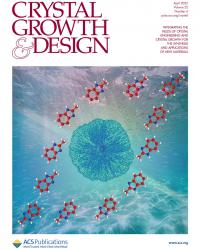
Xu paper on cover of Crystal Growth & Design
A paper on organic ferroelectrics by Xiaoshan Xu and colleagues was recently published as a cover story in Crystal Growth & Design. The article is titled "Highly Oriented Organic Ferroelectric Films with Single-Crystal-Level." (4/6/22)

Remembering the life and work of David Sellmyer
Founding director of the Nebraska Center
for Materials and Nanoscience, David J. Sellmyer, 83, died at home
surrounded by his family on March 25. Sellmyer was the driving force behind
the creation of NCMN, the Voelte-Keegan Nanoscience Research building, and
the Nebraska Nanoscale Facility. Dan Claes, current department chair and
professor of physics and astronomy said of Sellmyer's leadership, "I don’t
believe there’s anyway we could overstate the impact Dave has had on the
department, university and specifically our materials science program. It’s
a legacy that will be with us this forever.”
Condolences can be left on the Wyuka
website, and a recording of the funeral service is available on
YouTube. (4/5/22)

Schubert on international team published in Nature
A study published six years ago by Mathias Schubert planted the seeds for what grew to an international collaboration and the discovery of a new material class that could impact the future of emerging biotechnology and nanotechnology. Schubert and his colleagues had their latest paper, Hyperbolic shear polaritons in low-symmetry crystals, published in Nature. The group believe their results “will motivate new directions for polariton physics … greatly expanding the material base and extending design opportunities for compact photonic devices.” (Other articles: Nebraska EPSCoR, College of Engineering, Max Planck Society, Vanderbilt University) (3/6/22)

Bao's CAREER Award supports work to make quantum simulators function at room temperature
Quantum simulators are key tools in the study of quantum systems, but their use is limited because they must operate with bulky ultra-low-temperature vacuum systems beyond the capacity of many research labs. With a five-year, $756,713 grant from the National Science Foundation’s Faculty Early Career Development Program, Wei Bao hopes to find a way to make those simulators function at room temperature; this would greatly expand the scope and accessibility of work with quantum simulators. (2/16/22)

Argyropoulos paper featured on cover of Nanoscale
Christos Argyropoulos, and graduate students Boyuan Jin and Dhananjay Mishra, published an article titled ‘‘Efficient Single-Photon Pair Generation by Spontaneous Parametric Down-Conversion in Nonlinear Plasmonic Metasurfaces” in the journal Nanoscale. Journal editors selected the paper to be featured on the cover, an honor given to the best papers of each issue. (2/8/22)

Yang team working to improve strength, color of feather-based fibers
A team led by Yiqi Yang is developing a process that would transform chicken feathers - largely considered a waste product of chicken production - into fibers that find a place in natural fabrics. In a recent study, Yang’s team experimented with a cross-linking class known as saccharide aldehydes. By modifying the molecular structure and concentration of the aldehydes, the team developed keratin fibers substantially stronger than those produced via another popular cross-linker, citric acid. (1/12/22)

Tsymbal team's data-decoding approach could lead to faster, smaller digital tech
Evgeny Tsymbal and colleagues have published a new study showing that spin-independent conductance in compensated antiferromagnets and normal metals can be efficiently exploited in spintronics. The team identified ruthenium oxide as just such an antiferromagnet, as well as titanium dioxide as the barrier through which electrons can tunnel. Critically, the atoms of the two respective oxides form the same crystalline structure, resulting in a seamless match that allows electrons to maintain their momentum — and their momentum-dependent spin — as they move between the materials. This research was supported, in part, from the National Science Foundation's $20 million grant facilitating Nebraska's EPSCoR-EQUATE project. (1/6/22)

Hong featured on "Stories from the NNI" podcast
A podcast interview between Xia Hong and Lisa Friedersdorf, Director of the National Nanotechnology Coordination Office has been released online. In this episode, Hong discusses her work investigating the properties of complex oxide nanostructures and interfaces. The podcast interview is available on YouTube. (12/16/21)

Shield and team look to boost heat transfer of copper
Jeff Shield and colleagues have been investigating how to improve the heat transfer of copper used in pool boiling. In a new study, the team increased the surface area of copper by firing 4-picosecond-long laser pulses at it. However, this also coated the surface with oxides that curbed the otherwise improved heat transfer. So the team tried cleaning the surface with different acids, and found that citric acid worked best, but only when the number of laser pulses remained below a certain threshold. (11/15/21)

Markvicka team's design could curb overheating, up performance of soft electronics
A new study from a team led by Eric Markvicka has shown that embedding a silicone material with gallium-based droplets — and, crucially, embedding those droplets with microscopic spheres of hollow glass — can mostly retain the boost in heat dissipation without sacrificing the material’s lightweight pliability. This design could greatly impact things like the computing power of microelectronics and thermoregulatory garments. Markvicka's team included NCMN members Sangjin Ryu and Jeff Shield. (11/15/21)

NNF featured in Annual Research Report
The Nebraska Nanoscale Facility was the star of a feature story in the 2020-2021 Nebraska Research Report. The story highlights the importance of the facility for advancing academic and industry nanoscience research in the Midwest, the success the facility saw in its first five years, and the education and outreach activities that are key to the facility's mission. (11/10/21)

Nebraska students win NNCI image contest
'A Micro Blooming Lotus,' the image submitted by Aofei Mao and Peixun Fan to the National Nanotechnology Coordinated Infrastructure's (NNCI) Plenty of Beauty at the Bottom image contest, was the winning entry in the Most Stunning category. The contest is held yearly in honor of National Nanotechnology Day and winning artists will receive up to $1,000 in travel support to a professional conference of their choice. (10/25/21)

Saraf advances work on first-of-its-kind ‘living’ transistor chip
Ravi Saraf and his team are one step closer to developing a new kind of transistor chip that harnesses the biological responses of living organisms to drive current through the device, shedding light on cellular activity at an unprecedented level of sensitivity. Eventually, this “living” chip may enable faster and simpler diagnosis of sepsis, illuminate understanding of antibiotic resistance and bolster efforts to develop neuromorphic devices, which mimic the human brain. (10/11/21)

Hong team develop technique to measure anisotropy of rhenium disulfide
Xia Hong and colleagues (including Evgeny Tsymbal and Stephen Ducharme) have developed a new technique allowing them to study and more precisely measure the anisotropy of a promising semiconductor - rhenium disulfide. By layering a ferroelectric polymer atop the rhenium disulfide, then flipping the polarization of a narrow sliver within the polymer, the team discovered that rhenium disulfide’s conductivity greatly depends on the orientation of the path itself. They also found the anisotropy was largest when measuring it in rhenium disulfide that was four atomic layers thick. (9/22/21)

John earns NNCI Outstanding Staff Award
Jacob John, Coordinator and Program Manager of the Nebraska Nanoscale Facility, has been awarded a 2021 Outstanding NNCI Staff Member award in the category of 'User Support.' The awards, presented by the National Nanotechnology Coordinated Infrastructure (NNCI), acknowledge the significant efforts by NNCI site staff members who endeavor to provide excellent service and support to all network users. (8/20/21)

Haghshenas team looking at corn, soybean oil to recycle asphalt
a href="https://ncmn.unl.edu/faculty/haghshenas">Hamzeh Haghshenas Fatmehsari and colleagues are studying the efficacy of using corn and soybean oil in the process of recycling asphalt. The rising cost and environmental impact of using crude oil in the process prompted Haghshenas Fatmehsari to explore greener alternatives. He knew that vegetable oils, specifically corn and soybean oil, were great options for recycling asphalt in the short term. Now he and his team are trying to improve the long-term performance of the recycled asphalt pavement (RAP) material containing these oils. (8/4/21)

Lu team develop method to guard carbon fiber against oxidation
Yongfeng Lu and colleagues have developed a low-cost, scalable method of protecting carbon fibers from oxidation when exposed to extreme temperatures. They found that dipping carbon fibers into a molten salt mixture containing titanium and chromium powders triggers a spontaneous reaction that leaves the fibers with a three-layer protective coating. The coated carbon fibers remained undamaged when exposed to 2,200 degrees Fahrenheit and extreme environmental conditions simulated with an oxyacetylene flame. Bai Cui is also involved in this research. (7/26/21)

Sellmyer honored with endowed chair
David Sellmyer has been recognized for his achievements at Nebraska with an endowed faculty chair named in his honor. The David J. Sellmyer Chair in Condensed Matter Physics was established with a gift from John Woollam to the University of Nebraska Foundation. The Sellmyer Chair will be used to recruit faculty members with a strong publication record, proven effectiveness in building experimental collaborations, and success in securing collaborative grants. Additionally, the chairholder will grow the stature of the condensed-matter physics program, be dedicated to mentoring graduate students, and promote excellent physics education at all levels. (6/24/21)

Skomski receives REPM 2021 award
Ralph Skomski was honored with an REPM award at the 26th International Workshop on Rare-Earth and Future Permanent Magnets and their Applications. The award recognizes Skomski for his outstanding work on the research and development of permanent magnet materials. (6/10/21)

EQUATE project feature of WebMD article
The EPSCoR-EQUATE project (funded by a $20 million NSF grant) was the topic of a recent WebMD news article. The article highlighted Nebraska's unique position in the 'Silicon Prairie' to build a qualified workforce of quantum experts between the coasts. Christian Binek was interviewed and discussed the importance of the quantum science revolution and some of the advances in electronics, lasers, and medicine this grant will support. (6/9/21)

Streubel team advances understanding, control of magnetic droplets
In 2019, a team that included Robert Streubel managed to endow liquid droplets with permanent magnetism, partly by embedding them with tens of billions of iron oxide nanoparticles. Now, the team has shown the ability to tailor the magnetic properties of those droplets in multiple ways. The researchers were especially interested in learning how to tailor the magnetic properties of the droplets and, by extension, gain greater control over their movement. See the study. (6/8/21)

Recent publications: Streubel and Tsymbal
Robert Streubel and Evgeny Tsymbal are co-authors of
a perspective published in the Journal of Applied Physics titled, Magnetism in curved geometries.
Streubel is also co-author of a study published in the Proceedings of the
National Academy of Sciences USA titled, Ferromagnetic liquid droplets with adjustable magnetic
properties. (6/1/21)

$20 million grant for EQUATE announced
The University of Nebraska has received a five-year, $20 million award from the National Science Foundation’s Established Program to Stimulate Competitive Research (EPSCoR) to create a research and education cluster aimed at enhancing the state’s competitiveness in the field of emergent quantum materials and technologies, and boosting the participating institutions’ research and education capacity. The Nebraska EPSCoR-Emergent Quantum Materials and Technologies (EQUATE) collaboration will revolutionize quantum science and create opportunities in education and through economic development. This announcement was also featured in the Lincoln Journal Star. (5/24/21)

Binek named Charles Bessey professor of physics and astronomy
Christian Binek was one of six
professors recently awarded professorship from the Office of the Executive
Vice-Chancellor. The Charles Bessey/Willa Cather professorship was
established in 2001 to recognize faculty members with the rank of professor
who have established exceptional records of distinguished scholarship or
creative activity.
Binek is internationally recognized in the field of magneto-electric
phenomena related to spintronics, which explores and exploits the quantum
spin on atoms, molecules, or assemblies as the basis for a new generation
of electronic and data storage devices. He has written 122 peer-reviewed
papers, co-authored a textbook on thermodynamics, published a monograph on
Ising-Antiferromagnets, three book chapters, and five patents. Binek is
involved with many initiatives that pursue major grant-funded research
objectives and regularly speaks at domestic and international venues,
including a 2018 testimony on nanotechnology before a Congressional
Committee. Binek serves as director of the university’s Nebraska Nanoscale
Facility and as director of the Nebraska Center for Materials and
Nanoscience. (5/10/21)

Morin to speak at MRS Webinar Series
Stephen Morin will be speaking in a webinar on 'Materials Challenges in Soft Robotics' hosted by the Materials Research Society (MRS). The webinar will take place on Wednesday, April 28 at 7 a.m.

Binek to present for W2S webinar
Christian Binek will present his topic, 'Voltage controlled Néel vector rotation in zero magnetic field,' as part of the Webinar series on Spintronics hosted by the National Institute of Science Education and Research Bhubaneswar in India. The webinar will take place on April 21 at 11 p.m. CST. (4/20/21)

Binek, Dowben, Gruverman team makes breakthrough with antiferromagnetic material
After years of toil, a team led by Christian Binek, Peter Dowben, and Alexei Gruverman have developed a quantum material whose magnetic states can be altered by electric means alone, and above room temperature. The antiferromagnetic material - chromium oxide with a dash of boron - has properties that could make it a practical candidate for drastically improving the power consumption and speed of digital memory. The study was published in Nature Communications. (4/6/21)
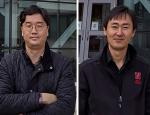
Eun, Kim team aims for safer storage of nuclear waste
Jongwan Eun and Seunghee Kim are leading a team of researchers working to develop a barrier material that will make the geological storage of spent nuclear fuels a safer proposition. Team is looking at adding an inorganic microfiber, such as glass, to bentonite to create a less-permeable and more-durable and heat-resistant material to store the spent fuel. The team has received a three-year, $800,000 grant from the U.S. Department of Energy. (3/10/21)

Bao published in Nature Photonics
Wei Bao and colleagues recently published an article in Nature Photonics titled A non-unitary metasurface enables continuous control of quantum photon–photon interactions from bosonic to fermionic. (2/16/21)
A non-unitary metasurface enables continuous control of quantum photon–photon interactions from bosonic to fermionic
Abstract

Yang team develops system to measure resilience, breakage of cellular bridge
Ruiguo Yang and his colleagues have managed to record the biomechanical behavior of mature, individual cell-to-cell junctions for the first time, as reported in Proceedings of the National Academy of Sciences. (2/3/21)
Characterization of the strain-rate–dependent mechanical response of single cell–cell junctions
Abstract

Yang team applying electric charges to cell surfaces
Ruiguo Yang and colleague Jae Sung Park have received a three-year, $387,356 grant from the National Science Foundation to apply electric charges to cells and study how those charges change the flows around pores in a cell’s surface. The idea is to improve drug delivery systems that could help fight cancer, heart disease, and neurodegenerative diseases. (1/26/21)

Gay solves conundrum of football physics
Tim Gay and colleagues have discovered the answer to a football physics question that stumped him for years - when a quarterback throws a deep, well-thrown pass, why does the football point up when thrown and then down when about to be caught? The answer lay in the concept of gyroscopic stabilization. The team knew that a well-thrown football, like the high-RPM gyroscope, possesses plenty of angular momentum. But with the aid of math and computer simulations, they came to a vital conclusion: The football can adopt a precession, too. (10/5/20)
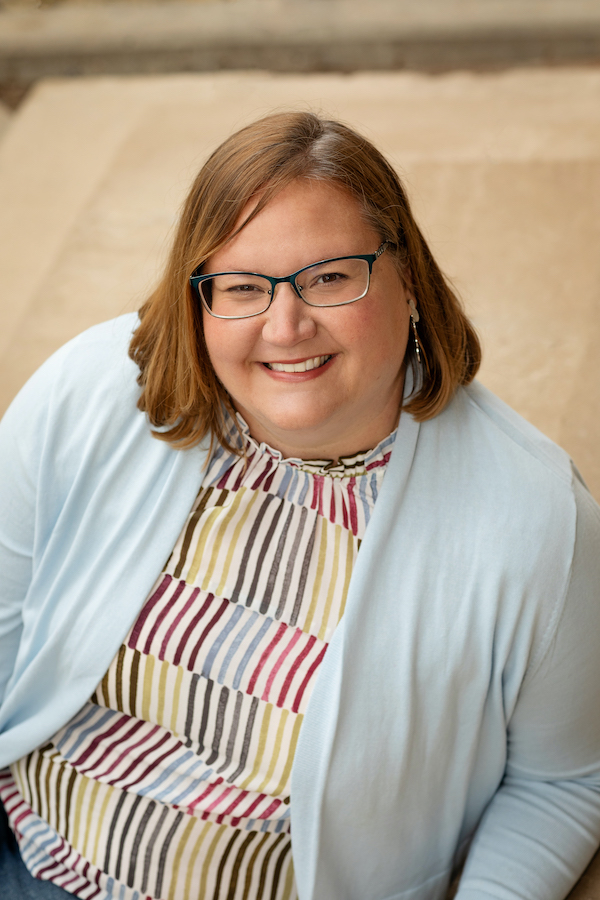
Bartelt-Hunt on team finding antibiotics in Nebraska watersheds
Shannon Bartelt-Hunt is among a team of researchers from UNL and UNMC that have discovered antibiotics used in human treatment in two Nebraska watersheds near Fremont and Lincoln. The discovery has researchers concerned about the potential impact this will have on the increasing resistance to antibiotics in humans. (9/3/20)

UNL announces NNF five-year renewal
The University of Nebraska has announced the five-year renewal of the Nebraska Nanoscale Facility through the NSF’s National Nanotechnology Coordinated Infrastructure program. “We can proudly say here in Nebraska that this is quite an elite club we are in,” said Christian Binek, director of the nanoscale facility. The national infrastructure aims to ensure “the entire country is equipped with the tools and expertise to perform nanoscience and nanotechnology. With this infrastructure we have, we are in a very good position to play an important role and compete nationwide and even internationally in this field,” Binek said. (8/28/20)

Husker team fine-tuning skyrmions to improve data storage, processing
A team led by David Sellmyer, Balamurugan Balasubramanian, and Ralph Skomski continue to make progress on their work improving skyrmions, by making them smaller and more stable, so they can be useful in practical applications. The team was recently able to increase the magnetic ordering temperature of a skyrmion supporting material beyond room temperature while also shrinking the size of the skyrmions to ~17 nanometers. This discovery counters the conventional wisdom that only larger skyrmions can be realized at room temperature; for future applications, skyrmions would ideally be ~10 nanometers. (7/21/20)

Bartelt-Hunt on team testing wastewater for virus detection
Shannon Bartelt-Hunt and a team of researchers from the University of Nebraska-Lincoln and the University of Nebraska Medical Center have partnered with the Lincoln Wastewater System to start projects that use wastewater samples for early detection of the SARS-CoV-2 coronavirus. In a study conducted at Yale University, researchers were able to predict the number of coronavirus cases seven days ahead using the amounts of coronavirus found in the samples. Bartelt-Hunt has been collecting weekly wastewater samples from Lincoln, Grand Island, and Omaha and working with researchers at UNMC on testing methods and the possibilities of sequencing and culturing the virus to learn more about its origins as well as precautions needed for utilities workers. (7/10/20)

Binek contributes to 2020 Magnetism Roadmap
Christian Binek was one of several scientists chosen to contribute to the 2020 Magnetism Roadmap, which offers an expose of newly relevant and highly active areas in magnetism research. Binek’s contribution is titled “Multiferroic heterostructures and magnetoelectrics.” (7/20/20)
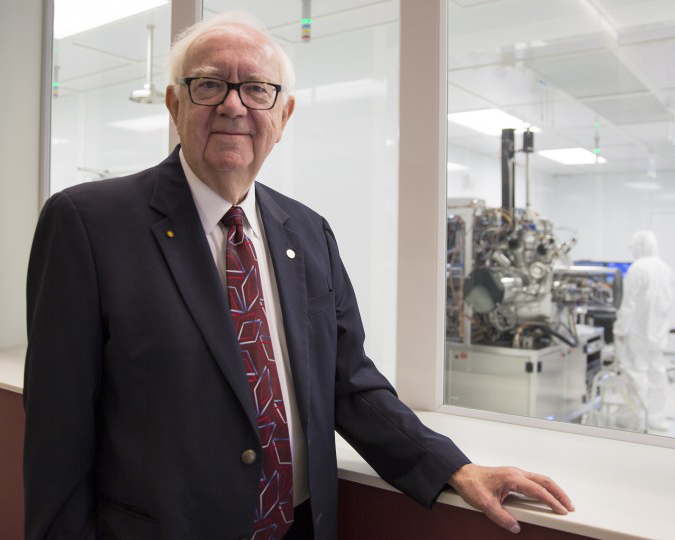
The legacy of Sellmyer’s career and leadership
In the second story of a five part series from ORED highlighting research leadership, the spotlight shined on David Sellmyer’s leadership successes during his long career. The article features much commentary from current and former colleagues praising his leadership, mentorship, management, and his knack for seeing the big picture. (5/29/20)

Top Awards from Public Sponsors, April 2020
These awards from public entities include all arts and humanities grants of $10,000 or more and all other grants of $200,000 or more between March 16 and April 15, 2020, as reported through NUgrant. NCMN recipients:
- Peter and Eli Sutter; ECE/MME; $496,037, Department of Defense-Office of Naval Research; Riemann Surfaces in Layered Van der Waals Nanowires: Precision Twist Moires, Nanoscale Solenoids and Screw Dislocation Spin-Orbit Coupling
- Ruiguo Yang (and J. Park); MME; $387,356; NSF; Nonlinear Electrokinetics at Polarizable Soft Interfaces: Implications for Cell Membrane Characterization and Nanopore Transport
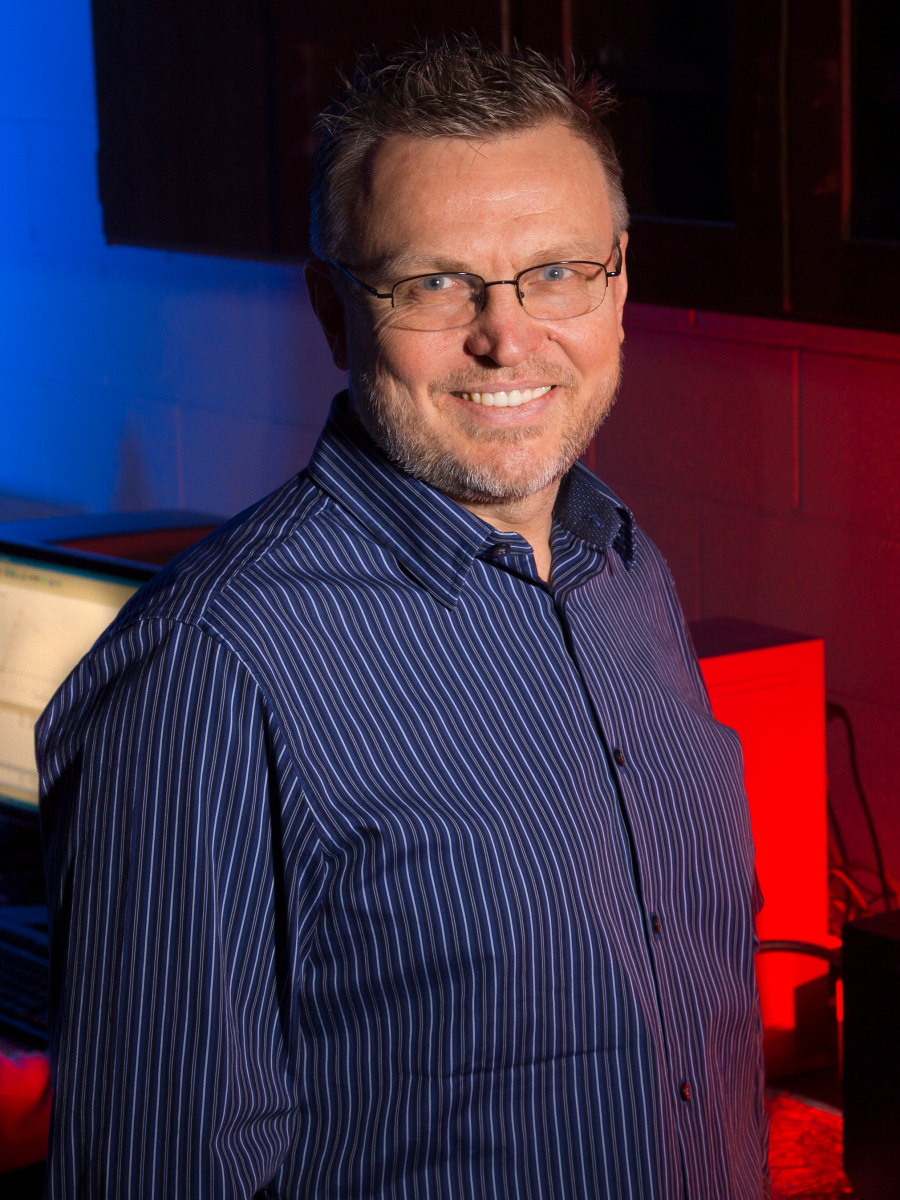
Dzenis team makes breakthroughs studying high-performance fibers
Yuris Dzenis and colleagues have made some new discoveries while studying the failure of high-performance fibers found in body armor and aerospace engineering. The team devised a way to analyze the failures of the polymer fibers that avoided the perturbations that invalidated measurements captured by other techniques. The study was recently featured on the cover of ACS Applied Materials and Interfaces. (5/20/20)

‘Strange effect’ raises possibility of smaller, smarter optical filters
Xia Hong and colleagues have discovered a ‘strange trick’ while studying how the optical behavior of single-layer molybdenum disulfide responded when it was placed atop a ferroelectric material called lead zirconate titanate, or PZT. Instead of observing second-harmonic generation uniformly across the surface, the team noticed that certain segments were boosting the phenomenon even as others dampened it. This discovery could spur the development of smaller, more versatile optical filters that are especially adept at playing with a trick of the light. Among the co-authors were two other NCMN faculty: Yongfeng Lu and Evgeny Tsymbal. (4/29/20)

Nejati team experimenting with organic LEGOs
A team led by Siamak Nejati, including researchers from the Colorado School of Mines, Harbin Institute of Technology, and the University of Pennsylvania, have discovered a way to synthesize a special type of organic solids, known as porphyrin-based covalent organic frameworks (POR-COFs). COFs are porous, lightweight and durable; the researchers compare them to LEGO bricks for their ability to be assembled in defined ways and relatively quickly to form a variety of larger structures. (4/14/20)

Alexandrov receives CAREER Award
Vitaly Alexandrov has received a $520,244 CAREER Award to advance basic understanding of how nanocrystals dissolve in aqueous environments. (3/2/20)

Yang on team developing smart bandages
Ruiguo Yang has been working with Ali Tamayol (former Husker, now at University of Connecticut) to develop smart bandages, which feature an array of tiny needles that can help heal chronic wounds by delivering therapeutic drugs directly to damaged tissue. “By plunging past the dead surface-level tissue that can persist for months in people with Type 2 diabetes, those needles could administer drugs to help close wounds, reduce infection, stimulate cell growth and potentially restore blood flow. Limiting the duration of such wounds, the researchers said, could also help dethrone them as the leading non-traumatic cause of amputations.” (2/27/20)

Binek gives CAS Inquire Lecture
Christian Binek presented his CAS Inquire lecture, The Rise of Nanotechnology: Small Machines with Big Impact, on January 28. A video of the lecture can be viewed here. (1/29/20)

The Sutters team adds twist to van der Waals heterostructures
Peter and Eli Sutter, along with colleagues from Aalto University and the University of Wyoming, have discovered that by adding sulfur they could directly synthesize twisted stacks of van der Waals heterostructures. (1/15/20)

Negahban team working to redirect sound waves
Mehrdad Negahban, working with colleagues from Peking University, has developed a wave-altering prototype that can dynamically redirect the sound waves passing through its surface. The prototype could lead to applications ranging from magnifying signals to disorienting adversaries. (11/14/19)

Binek named Director
Christian Binek has been named director of the Nebraska Nanoscale Facility and interim director of the Nebraska Center for Materials and Nanoscience, succeeding David Sellmyer, George Holmes University Distinguished Professor of physics. “As a veteran leader of interdisciplinary research within NCMN, as well as in the university’s NSF-funded MRSEC, Christian is ideally positioned to advance the center’s mission,” said Bob Wilhelm, vice chancellor for research and economic development. “This leadership experience, combined with Christian’s nationally regarded research expertise in magnetoelectric materials and spintronics, will help him elevate the center as Nebraska’s premier site for materials research.” Binek’s appointment became effective October 4. (10/11/19)

Centurion earns $2M grant
Martin Centurion has been awarded a $2 million grant from the Department of Energy for a project that aims to capture moving images of single molecules in chemical transformations triggered by light. Centurion will work in collaboration with researchers from Kansas State University, Louisiana State University, and Brown University; the researchers will focus on molecules with possibilities for industrial chemistry and for solar energy conversion and storage. (10/21/19)

Lu team develops “shipyard on a ship”
Yongfeng Lu and his team have developed a laser system that prevents and repairs corrosion on aluminum-sided ships. Supported by the U.S. Office of Naval Research, the team is now ready to test the laser on a fully operational Navy ship, and will do so this fall. (10/2/19)
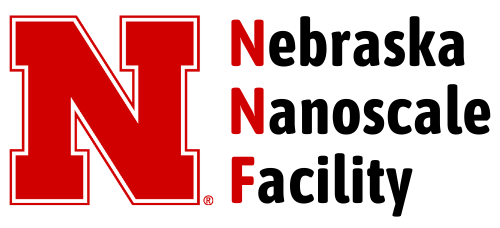
NNF Outreach featured in RAIN Newsletter
The Remotely Accessible Instruments for Nanotechnology (RAIN) quarterly newsletter highlighted the Nebraska Nanoscale Facility’s (NNF) summer outreach partnership with the Extension Office and 4-H. Fourteen schools and programs in the Omaha area participated in the Engineering with Nano Power experience. During these programs, participants were able to examine a variety of materials using the remote capabilities of NNF’s XRF. (10/2/29)

Pannier earns Presidential Early Career Award for Scientists & Engineers
Angela Pannier was one of two UNL faculty members to be awarded the most prestigious governmental award for early career researchers. Pannier was nominated by the U.S. Department of Health and Human Services for her work on over ten projects relating to biomaterials and gene delivery systems. Congratulations, Prof. Pannier! (7/5/19)

A look at Yang’s greener dyeing technique
Yiqi Yang and colleagues have been working to find a more environmentally friendly way to dye plant-based fabrics. The team has found that by dissolving dyes in cottonseed oil (instead of water) they can use less dye, reuse more dye, they don’t need to use salts, can get the same colors as with other techniques, and the waste produced contains mostly biodegradable products. (6/20/19)

Study points to non-Newtonian force affecting particles’ flight
Herman Batelaan and colleagues recently decided to explore two theories explaining the nature of the Aharonov-Bohm effect. In their results, the team showed mathematically that the two theories are two special cases of one overarching theorem. (5/30/19)

Nebraska Engineering team find defect that gives advantages to nanowires
While attempting to grow an optimal nanowire using crystals, Peter Sutter, Eli Sutter, and Shawn Wimer have found that a defect - a screw dislocation - occuring in the growth process causes the layers of crystals to rotate along an axis as they form. This defect creates twists that give these nanowires advantages, particularly in electronics and light emission. (4/22/19)

Yang team receives NSF grant to study cell communication
Ruiguo Yang and Jung Yul Lim’s research team has received a three-year, $439,584 grant from the National Science Foundation to investigate how linked individual cells communicate with each other and respond to physical changes in their shared environment, which could have implications to everyday medicine and other medical applications. (2/4/19)

Regents' Tour Research Facilities
NU Regents and other university officials toured some of the research facilities in the Voelte-Keegan Nanoscience Research Center on January 24. (1/25/19)

Argyropoulos receives $750,000 early career grant
Christos Argyropoulos received the three-year grant from the Office of Naval Research’s Young Investigator Program for his work exploring the use of ultrafast, short-pulse lasers to modify metal surfaces, which has the potential to be used in national defense applications. (1/25/19)

Researchers ID promising key to performance of next-gen electronics
Evgeny Tsymbal and Lingling Tao have identified a material whose crystalline structure might better sustain an electron’s spin: a property that, similar to charge, can represent bits of information in digital devices. This stability could result in cheaper, faster, and more energy-efficient devices. (11/13/18)

Nebraska-Tuskegee collaboration to expand minority opportunities in materials science
With the support of a six-year grant from the National Science Foundation, Nebraska’s Materials Research Science and Engineering Center will collaborate with Tuskegee University to offer the latter’s undergraduate and graduate students more opportunities for conducting upper-echelon research. The equipment housed at NCMN will help facilitate this partnership. (11/1/18)

Xu wins Early Career award
Xiaoshan Xu earned a $750,000 award from the U.S. Department of Energy’s Early Career Research Program to develop a novel approach that could advance the field of spintronics. He hopes that spin-based devices transform the industry by eventually replacing charge-based electronics. (9/10/18)

Cui and Rao to create ceramic/metal 3-D printer
Bai Cui and Prahalada Rao will be working with Tethon 3D to create a 3-D printer designed specifically for ceramic and metal additive manufacturing after receiving a grant from the Nebraska Department of Economic Development. (8/24/18)

Alexander team works to mimic natural surfaces on metal
Dennis Alexander’s research team is using lasers on metal surfaces to mimic evolutionary biological properties (like shark skin, rose petals, beetles, and moth eyes) that can be used for defense and industrial purposes. (7/29/18)

Nebraska researchers working to 3-D print replacement tissues
Prahalada Rao is part of a team of researchers that are working from different angles to develop replacement tissues for bodily injuries by 3-D printing them. Rao is working to perfect the 3-D printing process, so that flawless parts can be produced every time, essential when creating a variety of parts - from replacement knees to airplane turbines. (7/25/28)

Formation of smallest ever skyrmions could improve digital memory
Research led by David Sellmyer and Balamurugan Balasubramanian has resulted in the formation of skyrmions that are seemingly the smallest possible size at only 13 nanometers wide. This new finding could improve digital memory, including better energy efficiency, faster data processing speeds, and longer lifespans for hard drives. (7/12/18)

Researchers record “molecular movie” of photochemical reaction
Martin Centurion and colleagues, including researchers from Stanford University and Europe, have been able to precisely capture how the atomic nuclei and chemical bonds of a five-atom molecule responded when struck by a laser. The study marks the culmination of a years-long effort to advance the quality of “molecular movies” from that of a rudimentary stop-motion animation to a high-definition motion picture. (7/9/18)

Yang earns grant for converting feathers to fiber
Yiqi Yang and his team were awarded a $211,885 two-year pilot-scale production grant to continue their work on developing a product made from certain fibers found in feathers and wool. Textiles made with these fibers have increased performance properties, including moisture transmission, thermal insulation, soft hand and luster. (6/25/18)

Xu receives Early Career Award from DoE
Xiaoshan Xu was awarded a 2018 Early Career Award from the Department of Energy for his work exploring how combinations of thin materials may be used to control electrons’ spins. The award will provide him with $150,000 in annual funding for the next five years. (6/22/18)

UNL home to new hybrid 3-D printers
UNL’s Scott Engineering Center is now home to three unique hybrid 3-D printers that can add and subtract materials to create complex designs. The Nebraska Engineering Additive Technology (NEAT) Labs will provide researchers and students with endless possibilities for projects affecting a plethora of fields and industries. Click here to learn more about the NEAT Labs and the new instruments. (5/24/18)

Sellmyer Honored at MRS Meeting
The Spring MRS Meeting in Phoenix hosted a five-day Symposium “Nanoscale Magnetic Structures and Materials,” which was organized by friends and colleagues of David Sellmyer to celebrate his many achievements and contributions to the field. Some 30 outstanding invited talks were presented by speakers including Stuart Parkin (Halle), Claudia Felser (Dresden), Ivan Schuller (UCSD), Michael Coey (Dublin), Sara Majetich (CMU), Shouheng Sun (Brown), J.P. Wang (MN), B. Koopmans (Eindhoven), Y. Hou (Beijing), Arun Gupta (Alabama), Axel Hoffmann (ANL), and others. Current and former Nebraska colleagues and speakers included: Ralph Skomski, Jeff Shield, George Hadjipanayis, Toshi Matsui, Damien LeRoy, Yunlong Jin, and co-organizers J. Ping Liu and Hao Zeng. A banquet on April 3 featured excellent food and several roasts with good-natured ridicule. (5/18/18)

Sellmyer book one of most downloaded in 2017
The book “Nanoscale Magnetic Materials and Applications,” co-edited by David Sellmyer, is among the top 25 percent of Springer downloaded books in 2017 with 10,628 chapter downloads last year. There have been a total of 56,676 chapter downloads since the books publication in 2009. (5/1/18)

Four NCMN Faculty granted promotions and/or tenure in 2018
Congrats to the four NCMN faculty members who were honored on April 24: Jian Wang (Mechanical & Materials Engineering), promoted to full professor and granted tenure; Angela Pannier (Biological Systems Engineering), promoted to full professor; and Sidy Ndao and Sangjin Ryu (both in Mechanical & Materials Engineering), promoted to associate professor and granted tenure. (4/24/18)

Rao earns NSF CAREER award to revolutionize smart additive manufacturing
Prahalada Rao was awarded a five-year $500,000 CAREER award from the National Science Foundation to continue his work on improving the process of smart additive manufacturing (commonly referred to as 3-D printing) so that it might consistently produce flawless metal parts, which could make it feasible to mass-produce inexpensive metal parts where safety is paramount. (4/17/18)

Dishari earns CAREER award for work on hydrogen-based fuel cells
Shudipto Dishari earned a five-year, nearly $600,000 CAREER award from the NSF to continue her work on reducing the cost and improving the energy efficiency of hydrogen-based fuel cells and related energy conversion and storage devices (e.g., lithium batteries, semiconductors, natural biochemical systems). (4/15/18)

Tsymbal and colleagues observe long-sought phenomenon
Two UNL researchers were part of an international team that ended a 15-year quest to observe a phenomenon that could help power a future generation of (smaller) electronics. In 2004, researchers observed a gas of electrons coursing two-dimensionally through a nano-sandwich made from oxides. This suggested that electric currents could be confined to smaller spaces, allowing electronic components to shrink in size. However the negatively charged electron also leaves behind a positively charged “hole” when ejecting from its orbit around an atom. The goal of researchers was to create and observe a 2-D hole gas that likewise acts as a source of electric current. (3/7/18)

Researchers develop material gradient models that could strengthen polymer-based components
Mehrdad Negahban, Li Tan, and Wenlong Li - along with researchers from France and China - have developed a model that can map an optimal gradient onto a structure and calculate the resulting performance improvement. (2/6/18)
2017 and Older
2017
- Gu and colleagues seek to improve energy absorbing tubing to boost vehicle safety
- Pannier earns NIH award to enhance gene therapy
- Nebraska-led website offers brief highlights of condensed-matter physics
- Yang & colleagues find way to improve bio-plastic properties
- NanoArt on display in Nebraska East Union
- Yiqi Yang co-edits book
- Sorghum husks potential use as wool dye
- Dr. Sellmyer co-edits book
- Controlling elasticity with magnetism
- Milestone in effort to treat bone disorders
- Discovery Could Increase Functionality of Electronics
- Argyropoulos Receives Award and Fellowship
- Nano Faculty Earn Promotion, Tenure
- Huang & Team Publish Perovskite Research
- Thermal Diode Allows Heat as Energy Source
- Three Nano Faculty Earn Teaching Awards
- Particle Offers Promise for Vaccine Pill
- Lu Earns ORCA Award
- Pannier Earns Mentor Award
- Gay Earns Named Professorship
- 2016 Outreach Newsletter Published
- Enders, Dowben Team Creates 2D Material
- Cui & Wang Improve Metal Durability
- Morin Studies Stretchable Surfaces
2016
- NanoArt at Nebraska Innovation Campus
- Powerful Underwater Microphone Uses Silver Nanoparticles
- Huang Receives Breakthrough of the Year Award
- Monolith Materials to use NCMN/NNF Facilities
- Huang Protects Solar Cells from Moisture
- Kim and Turner Explore Alternative Concrete Materials
- New Materials Show Promise for Clean Energy
- Lu Selected for Schawlow Award
- UNL Team Bolsters Digital Memory
- Discovery Enhances Polymer Materials
- Self-Assembly of Nanocrystals Captured
- Huang Improves X-Ray Detection
- Bobaru Publishes Invited Study on Fracturing
- Sellmyer Team Finds Magnetism in Nanoscale Compound
- New Materials Become Reflective When Stretched
- Huang on Perovskite-based Solar Cells